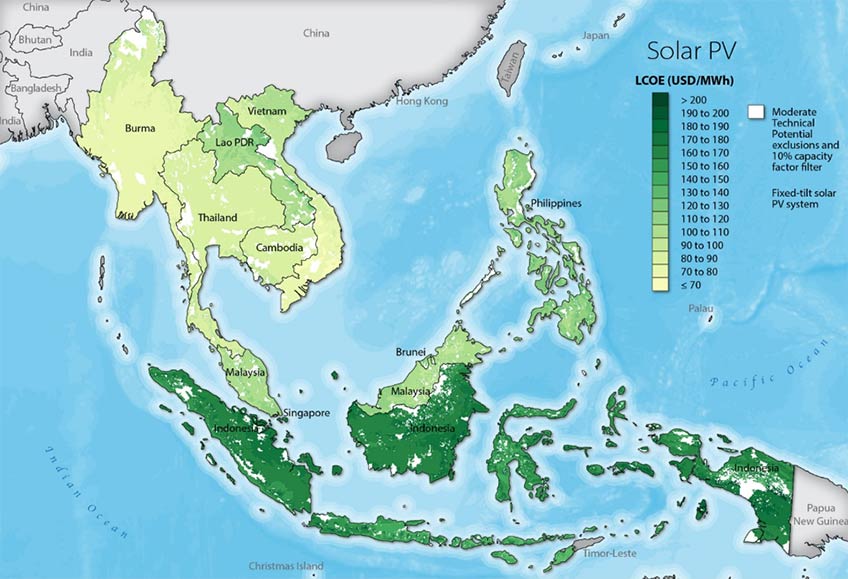First-ever Spatial Estimate of Levelized Cost of Electricity (LCOE) Reveals Abundant, Cost-Competitive Potential for Wind and Solar PV Across Southeast Asia
New Mapping Application Visualizes Costs of Developing Renewable Energy Resources
A new report, “Exploring Renewable Energy Opportunities in Select Southeast Asian Countries: A Geospatial Analysis of the LCOE of Utility-Scale Wind and Solar PV,” finds that there is abundant potential for utility-scale, land-based wind and solar PV development across Southeast Asia.
The report was developed through the partnership between the U.S, Agency for International Development (USAID) and the National Renewable Energy Laboratory (NREL). The analysis shows that the potential solar capacity exceeds 41 TW (or 59,386 TWh annually), and the potential wind capacity exceeds 1.8 TW (or 3,159 TWh annually), at PV costs ranging from $64 to $246 per MWh and the costs to develop wind ranging from $42 to $221 per MWh (in specific scenarios).
To assess the economic feasibility of developing these resources, the report uses the newly developed Cost of Energy Mapping Tool and provides insights into the role that factors such as renewable energy resource quality, installation costs, and other variables may play in the cost of generation. Download the full report.
The Cost of Energy Mapping tool is now available within the RE Data Explorer for Southeast Asia. The tool provides the first high-resolution, spatial estimate of Levelized Cost of Energy (LCOE), for utility-scale, land-based wind and solar technologies for Southeast Asia. The Cost of Energy Mapping tool enables users to analyze costs of developing solar and wind energy based on resource data and country-specific techno-economic inputs. Tool users can run an LCOE analysis for their province, country, or region and customize inputs such as installed costs and operation and maintenance costs. Spatial results of the analysis can be visualized online with complementary spatial data (such as transmission systems, population centers, or land-use types), queried, or downloaded to support further analyses. Estimating LCOE is an initial step in the assessment of economic potential for renewable energy resources and supports decision makers in setting renewable energy targets, developing enabling policies, and mobilizing private-sector investment.
NREL developed this new application in partnership with the USAID Clean Power Asia program and the Association of Southeast Asian Nations (ASEAN) Center for Energy (ACE).
Find out more at www.re-explorer.org.

Map of Solar Photovoltaics (PV) Levelized Cost of Energy (LCOE) in ASEAN Region for Moderate Technical Potential Scenario
Last Updated May 28, 2025
